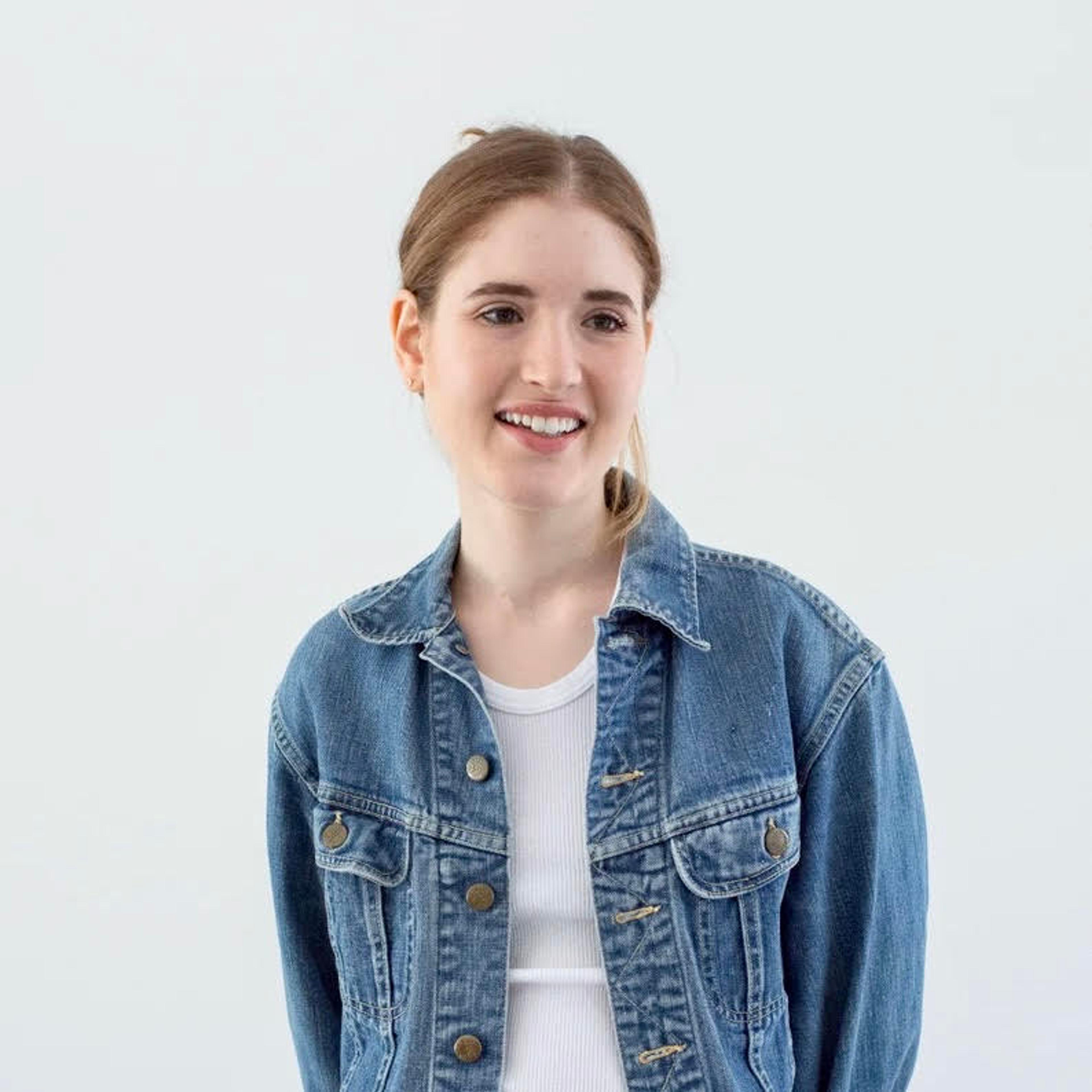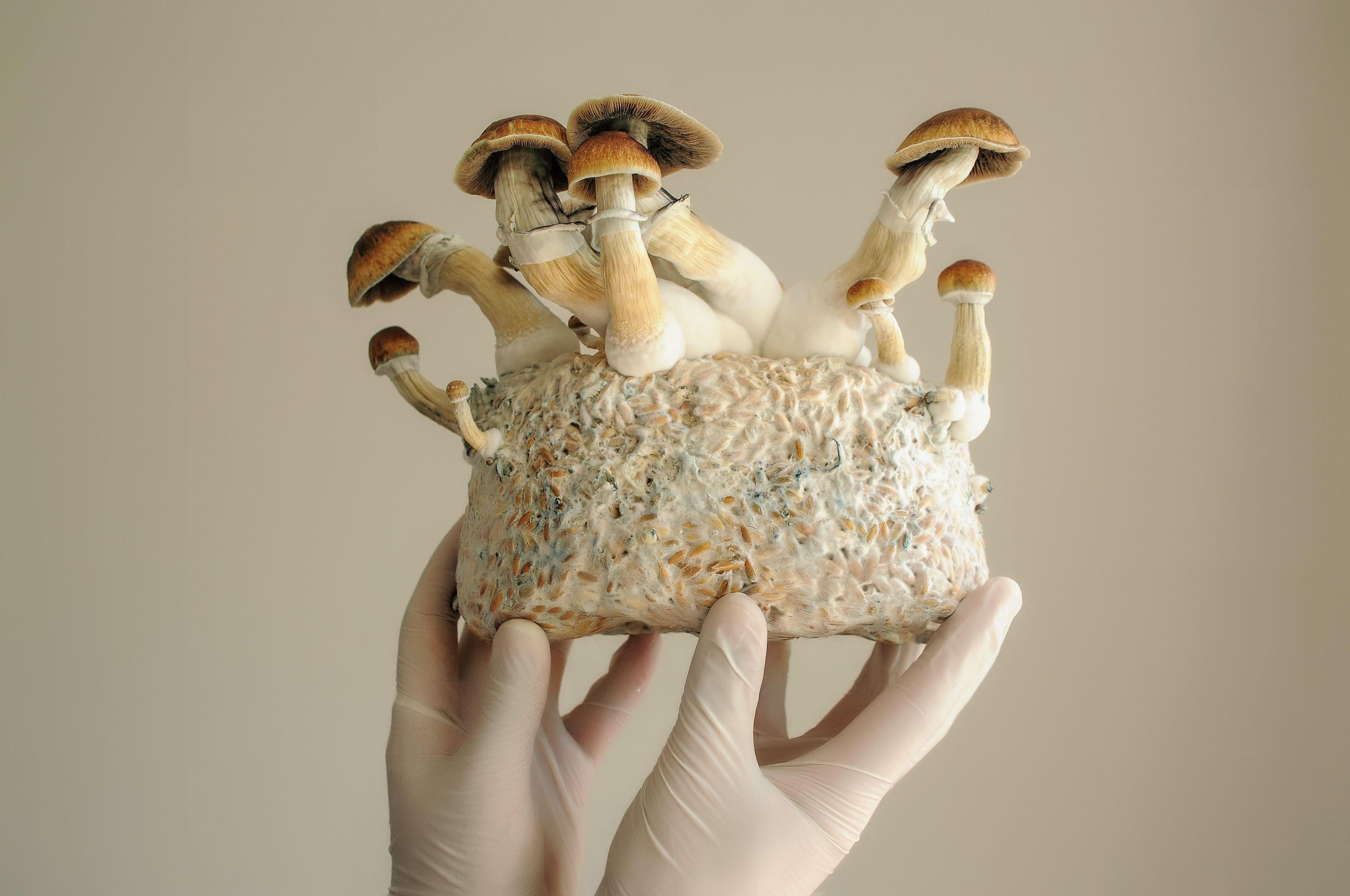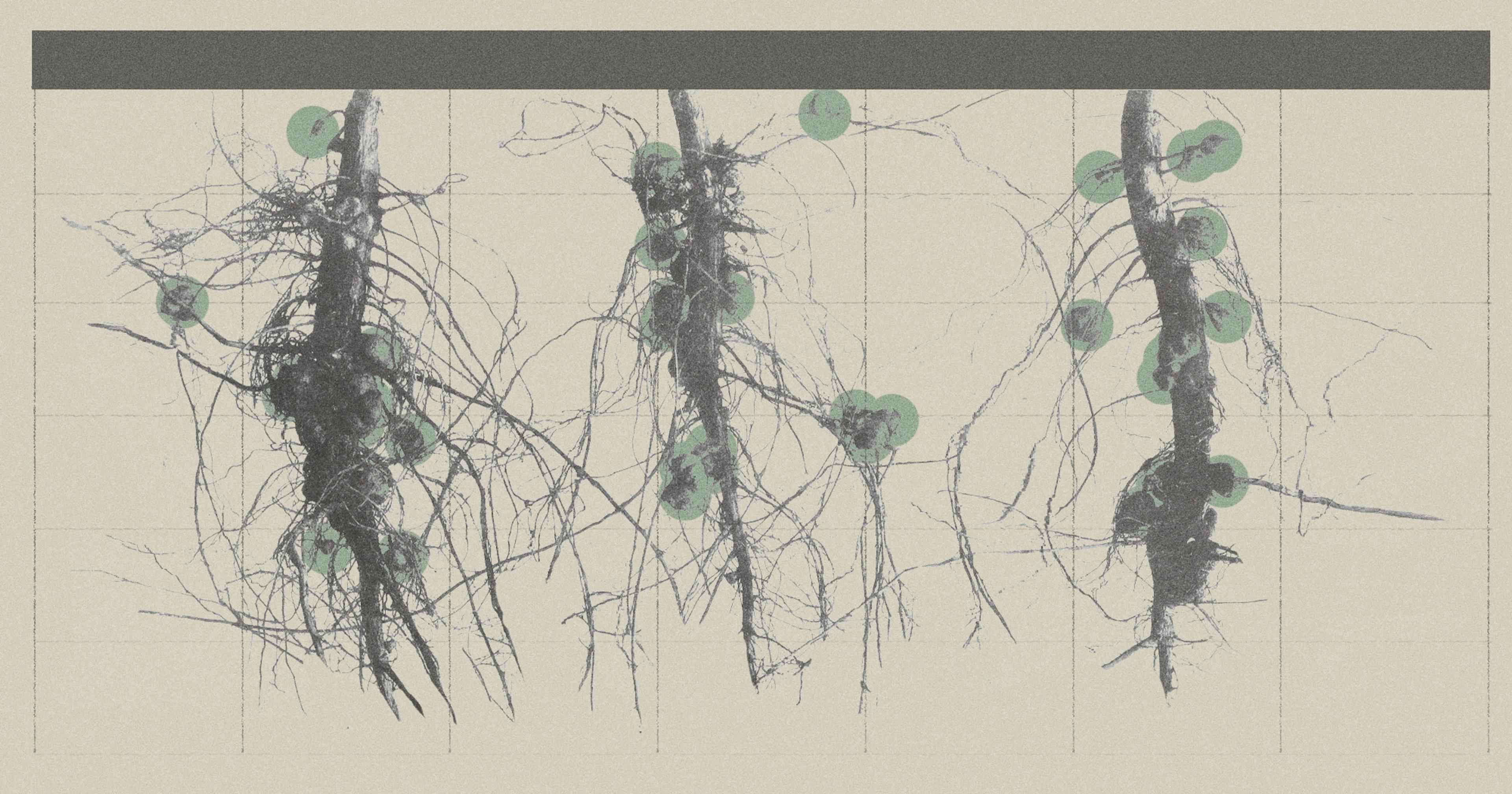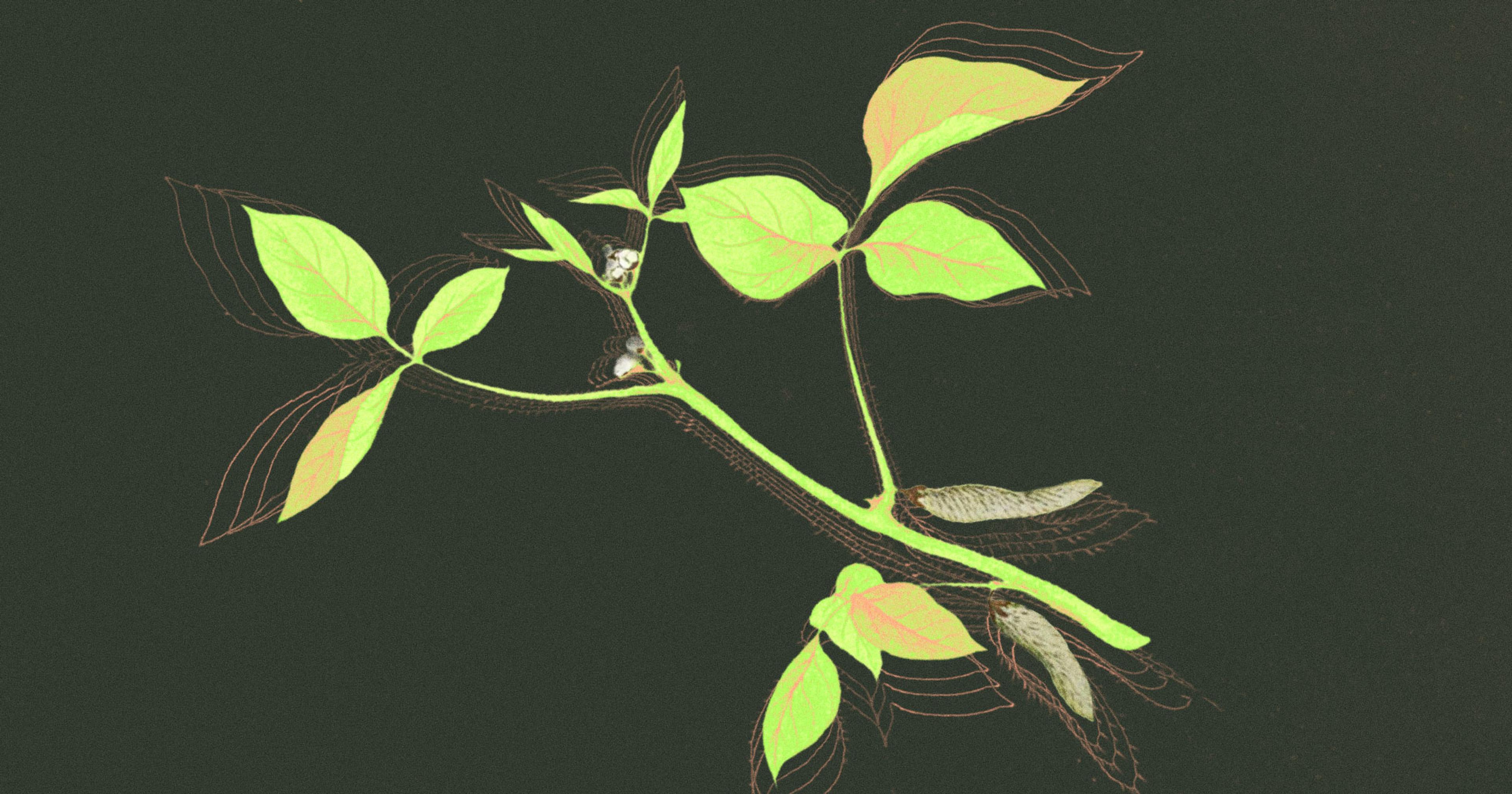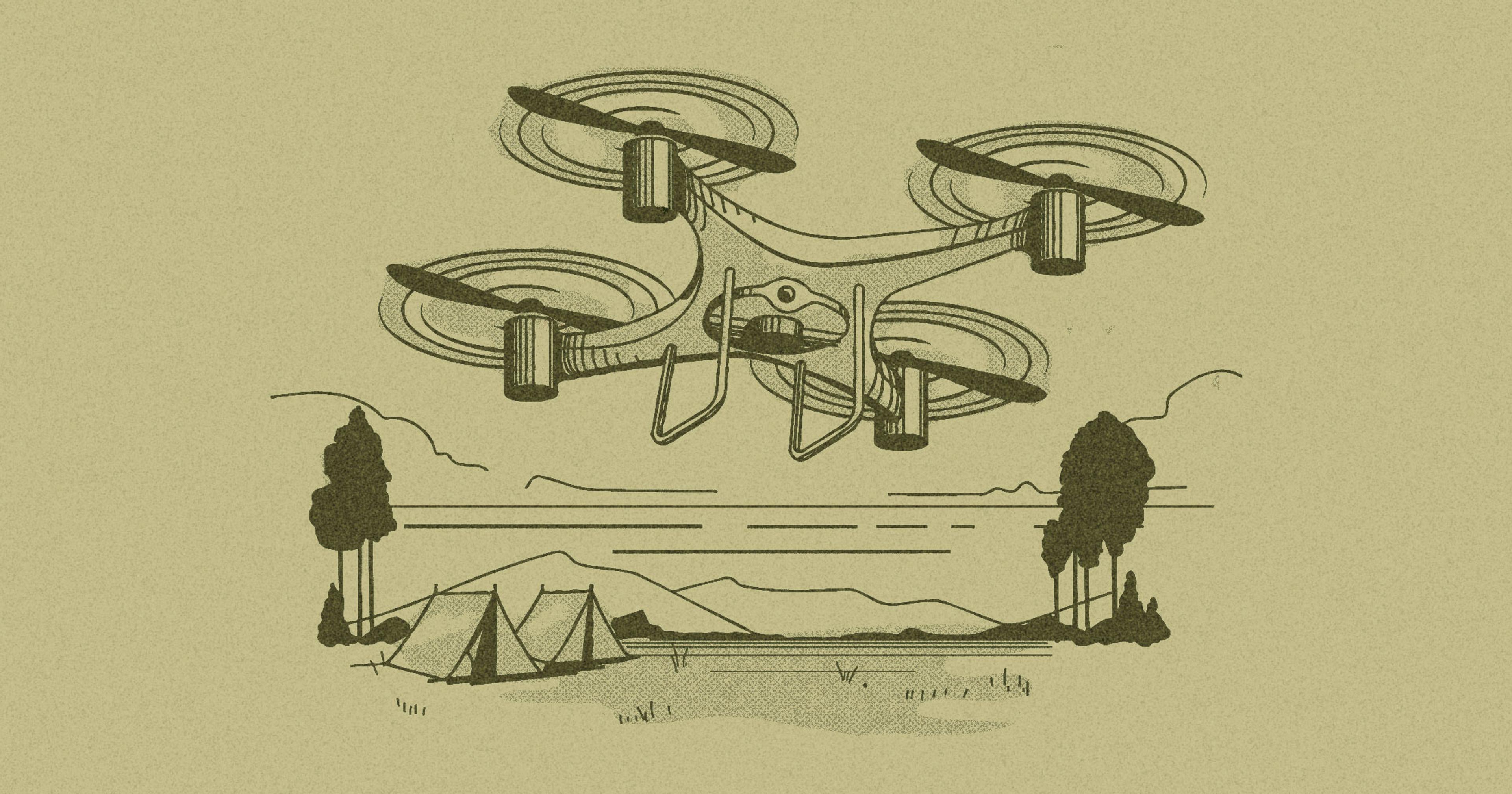There’s fungus among us — the mighty mushroom is turning up in fashion, construction, electronics, wellness, insulation, and more.
Life as we know it wouldn’t exist without fungi. Not only were mushrooms some of the first drivers of evolution on land — creeping out of the ocean upwards of a billion years ago — they are also the foundation of the planetary biodiversity we see today.
Mycorrhizal fungi are among the most prominent microorganisms in natural soils, and it is their sprawling networks that catalyze a variety of life in nearly every ecosystem on Earth. Healthy soil fungal communities hugely benefit crop yields and resilience, rendering them invaluable to agriculture. They break down waste and transfer nutrients from one life form to another, shepherding the flow of energy within and between ecosystems. And plant–fungal associations are thought to be one of our most potent opportunities for carbon storage to combat climate change. You may be wondering, “What can’t fungi do?”
Beyond the ceaseless thrum of ecosystem services the Fungi Kingdom provides without human intervention, right now there’s a white-hot enthusiasm for the potential of mushroom-based solutions to modern environmental dilemmas. From plant-based protein to biodegradable plastic, this climate-friendly industry is, well, mushrooming.
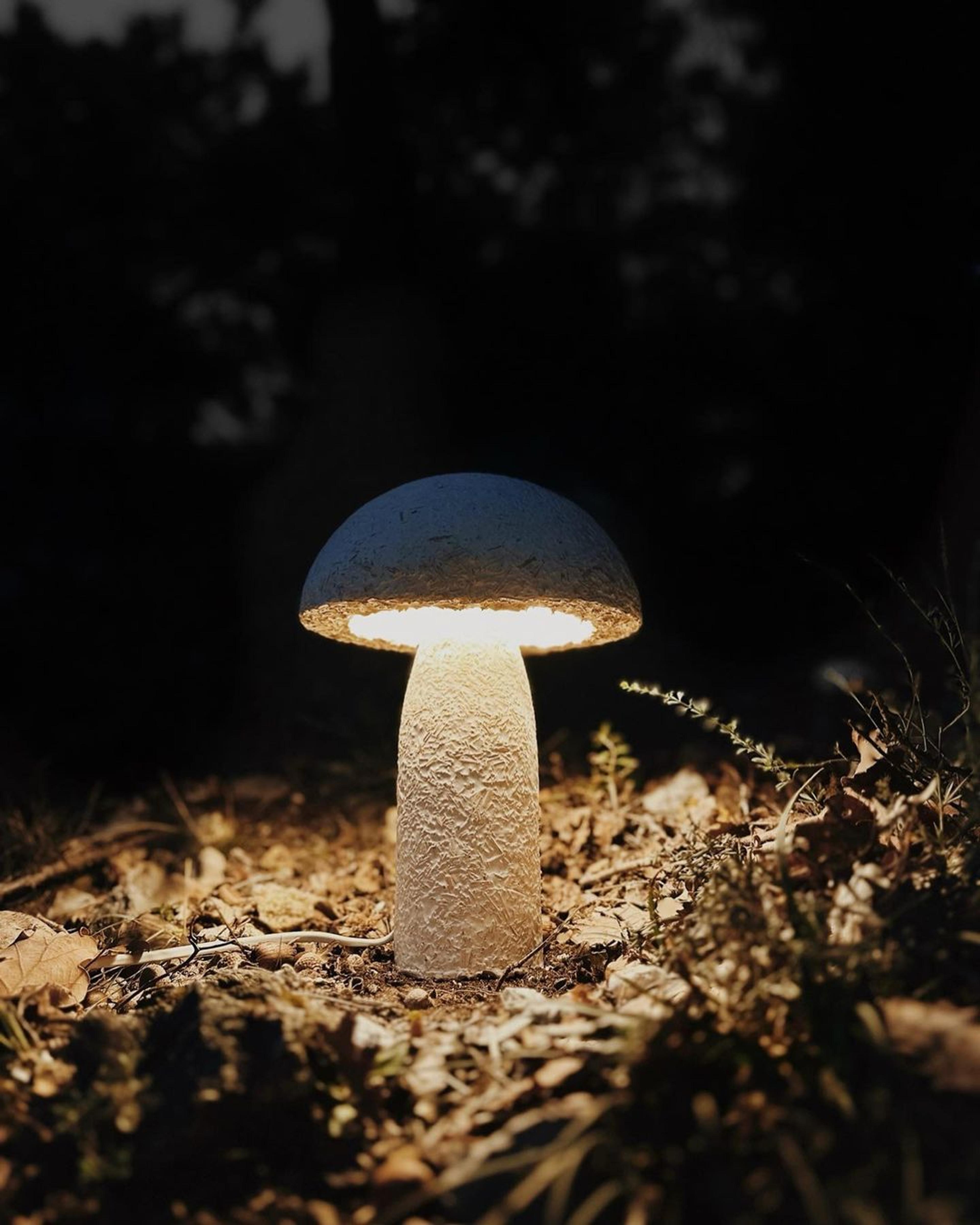
A lamp made entirely from mycelium.
Photo by MycoDesign
Mycelium Meat
The mycology-curious are probably already familiar with mushrooms as a meat alternative, but today’s fungal fare has advanced far past portobello burgers. Whole-food protein producer Eat Meati makes animal-free cutlets and steaks whose texture is remarkably similar to muscle tissue. Meati’s key differentiator is mycelium strain Neurospora crassa, which the brand’s founders have dubbed MushroomRoot. They selected this particular strain (there are an estimated 5.1 million unique species of mycelium on earth) for its nutritional content, flavor, texture, and adaptability.
“We need more food sources, period, and we need food that delivers on whole-food nutrition,” said Christina Ra, Meati’s VP of marketing, Mycelium — grouped masses of fungal strands that branch underground like tiny roots — are unmatched when it comes to how quickly and efficiently they grow. The largest single organism on the planet is indeed a fungus in eastern Oregon, which spans nearly 10 square kilometers.
Given that animal agriculture is among the largest contributors to greenhouse gas emissions, occupies a third of the planet’s non-ice land surface, and uses over 15 percent of the global freshwater supply — a nourishing plant-based product with a fraction of the footprint could be a serious step forward for climate change mitigation. (Next up: mycelium-based “seafood.”)

Flexible material made from mushrooms.
·Photo by MycoDesign
Fungi Fashion
Biotechnology company MycoWorks began production on a new manufacturing facility in South Carolina this fall, set to grow millions of square feet of its reishi-based leather alternative to meet demand from luxury fashion buyers. Since launching at New York Fashion Week in February 2020, MycoWorks has caught the industry’s attention with their patented biomaterial — appraised to be on par with gold-standard calfskin leather. Used by legacy runway brands and high-end independent makers, their flagship product is grown in California as sheets of interwoven mycelium, and finished by heritage tanneries in Europe using chrome-free dying technologies.
Leather production poses far-reaching consequences in terms of resource consumption and pollution runoff, in addition to the environmental tolls associated with raising livestock. Traditional leather processing methods yield only 200 kilograms of usable leather per metric ton of raw material, and leaves more than 60 percent of waste material contaminated with heavy metals; including highly carcinogenic chromium, colored compounds, salts, and putrefying suspended matter.
As technology and design applications for mycelium continue to advance, opportunities for mass production will grow as well, hopefully enabling a more accessible range of price points.

Materials made from mycelium.
·Photo by MycoDesign
Propagating Health
The cultural appreciation for all things mushroom has its tendrils in the wellness industry now too. “We have thousands of years of history to look back on where humans have used mushrooms as medicine,” said Roger Holden, agricultural technician and co-founder of Fruiting Bodies — a line of organic tinctures and supplements made from functional mushroom extracts.
A small but growing body of research suggests that these remedies could have significant therapeutic potential. Medicinal mushrooms exhibit antiallergic and anti-inflammatory properties, may improve depression and digestive issues, and are thought to help maintain immunomodulation and homeostasis in the body. The health-promoting effects of mushrooms are supported by generations of wisdom from traditional Chinese medicine, Ayurvedic medicine, Indigenous medicine, and other non-Western healing systems; but there is still a lag in clinical trials to substantiate these claims.
Fruiting Bodies prides itself on rigorous third-party testing, according to the company’s other co-founder, who professionally goes by Ken Mycelium. Mushrooms are bioaccumulators, which means that toxins from the environment in which they are grown get collected and concentrated within the organism. So it’s extra important to ensure that any mushrooms meant to be consumed have been cultivated safely. “We are trying to elevate what the standards are, because right now the supplement industry is so unregulated,” said Ken Mycelium. “These mushrooms have incredible healing benefits, and we want people to have access to safe and high-quality products.”
“I wish we would start teaching kids at five years old about mycelium.”
Fruiting Bodies products are made with mushrooms grown organically in the U.S. and formulated for maximum absorption and bioavailability. In order to free the bioactive compounds from their non-digestible cell walls, mushrooms are zapped with ultrasound waves in a process known as sonication. This technology, Robert explains, wasn’t made affordable until it found its use in the cannabis industry, whose funding exceeds that of functional mushrooms by many orders of magnitude.
For Ken Mycelium, the case for more mushrooms goes farther than the pharmacological. “I wish we would start teaching kids at five years old about mycelium, how important they are in our environment, and learning how to grow them in the classroom,” he said. “I think we would all be better off.”
‘Shroom Supply
Canada-based Myzel is working to strengthen the nascent industry with greater transparency, sustainability, and cost-effectiveness. They operate in an old Ontario poultry facility, which the company retrofitted to minimize energy consumption and carbon output. The building is powered by solar panels and a geothermal heating and cooling system, and captures rainwater to repurpose for mushroom production.
Myzel is attempting to shift the narrative from what they call a “once mycophobic culture” — educating consumers about the mushroom life cycle and the benefits of each stage so that they can make well-informed decisions about the products they purchase.
“The industry is so diverse these days, with mushrooms touching practically every consumer segment,” says Andrea Wood, Myzel’s head of marketing. “Not just supplements and foods, but also homebuilding, environmental remediation, and clothing; it’s a really interesting spot to be in — to be both a player and a witness to all the change.” Operating as a bulk supplier, Myzel is keeping an eye on downmarket trends and how interest and innovation continues to evolve. “We’re excited to see how products find the right balance between health benefits, shelf life, and palatability,” Andrea said. “The options are endless.”
Infinite Adaptability
From wearable electronics and low-power batteries that prevent e-waste, to fire-resistant roofing that precludes toxic fumes emitted by plastic cladding, a fervor for fungi is popping everywhere you look. . Ecovative is one company leading the charge on mycelium-based biofabrication, creating natural sustainable alternatives to ecologically harmful materials. Their trademarked technologies can be used for building, construction, packaging, insulation, and more. Major corporations including Ikea and Dell have partnered with Ecovative to move away from notoriously un-recyclable styrofoam for their shipping needs.
The stage of mushroom cultivation in which mycelium begin to spread through whatever medium they are growing in is typically called “colonization,” but Ken Mycelium thinks the term is ill-suited. “Mushrooms are the connectors of the natural world,” he said. “We have so much to learn from them about how to live in community.” He prefers the neologism “myceliation” — an apt descriptor for both the growth of fungal threads and the burgeoning of sustainable innovation.
